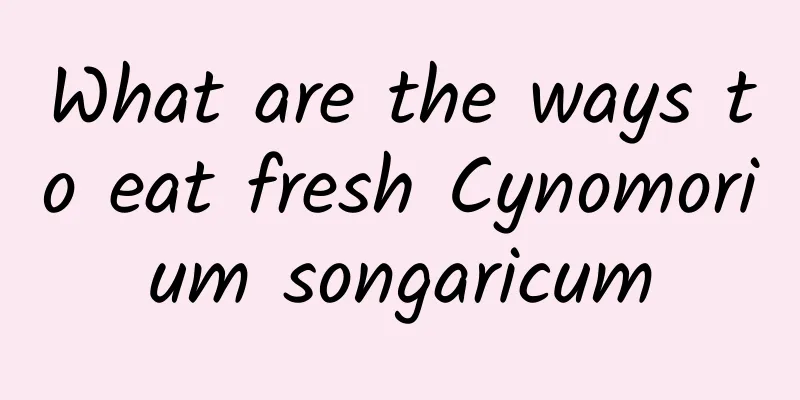The efficacy and function of angustifolia

|
Many people are not very clear about Angustifolia, so when choosing Angustifolia, you need to understand it so that you can feel at ease when eating it, which is beneficial for disease treatment. 【English name】 root of Narrow-leaf Rabdosina [Source] Medicinal material source: The root of the Lamiaceae plant Ipomoea australis. [Original form] Angustifolia is a perennial herb, 85-116cm tall. Roots lignified. The stem is erect, quadrangular, and pubescent. Leaves opposite; petiole 1-3mm long; apex acute or obtuse, base narrowly cuneate, margin serrate or very shallowly serrate from base upwards, sometimes nearly entire, with very short soft hairs and glandular dots above, and short soft hairs and glandular dots below. The calyx is bell-shaped, about 4 mm long, with short stiff hairs and glandular dots on the outside; the calyx has 5 teeth, which are lanceolate-triangular and slightly bilabiate, with 2 teeth on the upper lip and 2 teeth on the lower lip; the corolla is blue, about 11 mm long, with 4 circular fissures at the tip of the upper lip, and the lower lip is nearly circular, concave and boat-shaped, and nearly the same length as the upper lip; the stamens are 4, didyna, and enclosed; the ovary is 4-lobed, the style is longer or shorter than the stamens, and the stigma is 2-lobed; the disk is thick and cup-shaped. The nutlets are nearly round, slightly flat, and purple-brown. The flowering period is from September to October, and the fruiting period is from October to November. [Habitat distribution] Ecological environment: Growing on grassy slopes or under pine forests at an altitude of 1200-2600m. 【Chemical composition】 The leaves contain angustifolin, isodonal, and β-sitosterol[1]. 【Pharmacological action】It has good anti-tumor activity. 【Functions and indications】 Strengthens the stomach and harmonizes the stomach; promotes blood circulation and dredges the meridians. Indigestion; Keshan disease cramps and pain; tumors [Usage and Dosage] For oral use: decoction, 6-15g. For external use: take appropriate amount and decoct in water for washing. [Discussions by various scholars] "Xinhua Compendium of Materia Medica": It is used in Yunnan to cure Keshan disease and indigestion. 【Excerpt】 Chinese Materia Medica The utilization rate of Angustifolia in traditional Chinese medicine is still very high, and it can be used to treat a variety of diseases. We should eat it after fully understanding the effects and functions of Anemarrhena asphodeloides. I hope everyone doesn’t eat carelessly. |
<<: The efficacy and function of Angelica angustifolia
>>: The efficacy and function of V. angustifolia
Recommend
Hot, hot, hot! Why does the perceived temperature VS the meteorological temperature feel so different?
I believe many of my friends have had this experi...
The efficacy and function of Caragana scabra
In modern life, everyone is very familiar with va...
The efficacy and function of Ding oyster
As people's living standards continue to impr...
What is the ratio of Angelica sinensis to Astragalus membranaceus?
Diet is the safest and most effective way to regu...
Can "sugar-control rice" really control blood sugar? Steaming ordinary rice in this way can also help you stabilize blood lipids and blood sugar
Rice is an important staple food on the table and...
Choose C for all the questions you don't know in the exam. Metaphysics or truth? Forget it...
I wonder if you have ever heard of this kind of m...
The efficacy and function of Pepper Variegata
The efficacy and function of the Chinese medicine...
"Long March 8 Yao 2" successfully launched 22 satellites in one rocket! How did so many satellites "line up to enter orbit"?
On March 5, the Long March 2C rocket successfully...
Did Yutu crash due to speeding? How is that possible?
"Yutu was damaged by racing?" There are...
[Creative Cultivation Program] Can "blood washing" therapy help lose weight and lower blood lipids? Dangerous! The truth is...
When the machine starts, the garbage in the blood...
What are the effects and functions of bitter grass
When it comes to the Chinese medicinal material b...
The efficacy and function of wormwood
Chongdouchao is a kind of Chinese herbal medicine...
Sweat on forehead
People are very concerned about their own bodies....
The efficacy and function of madder stem
Rubia cordifolia stem is a very common Chinese me...
What is the nose under the bow of a boat for? Without it, the boat can't go fast.
Have you ever noticed those ocean-going cargo shi...









